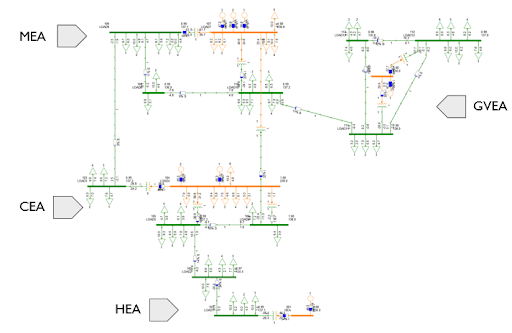ACEP sponsored UW Engineering Capstone Project Developing a Synthetic Railbelt Power System Model

Before considering any infrastructure upgrade, whether it be a house remodel or a utility-scale power transmission system, it is important to create a well-thought-out plan and design.
ACEP researchers Phylicia Cicilio, Michelle Wilber, Chris Pike and Mohammad Heidari sponsored and mentored a team of electrical and chemical engineering graduate students from the University of Washington on a capstone project focused on developing a synthetic power system model of Alaska’s Railbelt transmission system.
A synthetic power system model is a fictional but realistic power system model, typically with a geographical overlay on a region. Synthetic power system models have been created for regions across the contiguous United States. The models are created from building information available on OpenStreetMap and network and power systems statistics of actual power systems. Using this publicly available information, a fictional system is designed using heuristics or machine learning to determine groupings of loads, buses, generation locations and amount, and transmission line connections. These synthetic test cases are highly beneficial to researchers, as they represent realistic conditions and scenarios of power systems without having any confidential information. Additionally, the geographic overlay of the model allows solar and wind generation outputs to represent actual locational wind and solar behavior.
The team of UW graduate students included Laura Rackley, Boyuan Xie, Hu-Kung Chen, Abhineet Nigam and Yao-Yang Hsieh. The students used data from OpenStreetMap and published statistical metrics of power systems to generate a synthetic power system model of Alaska’s Railbelt transmission system in the power system simulator Siemens PSSe.
This model will be highly beneficial to ACEP researchers in testing ideas in a fictional but realistic system. ACEP researchers will continue to develop and add to the model for future studies.
The model is available to the public upon request. After additional testing, the model will be published in the open source BetterGrids test systems repository. The code and data used to create the model are publicly available via Github, https://github.com/ryan0124/ACEP_Capstone_Project.
To learn more, please contact Phylicia Cicilio at pcicilio@alaska.edu.


